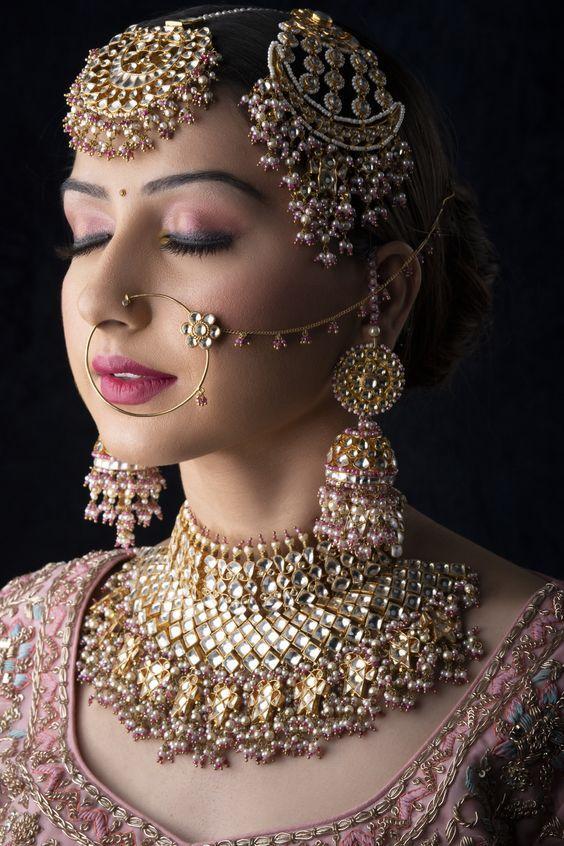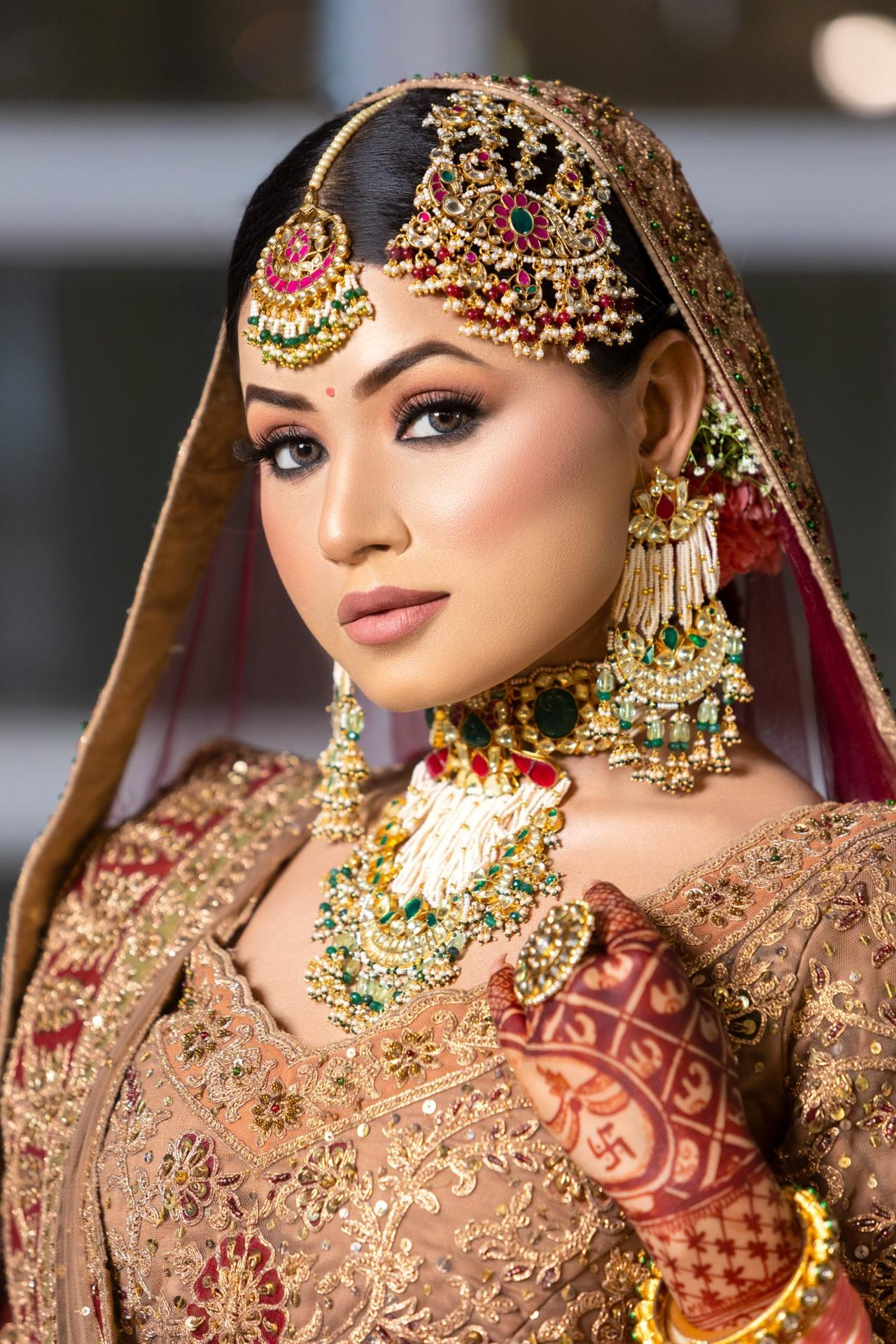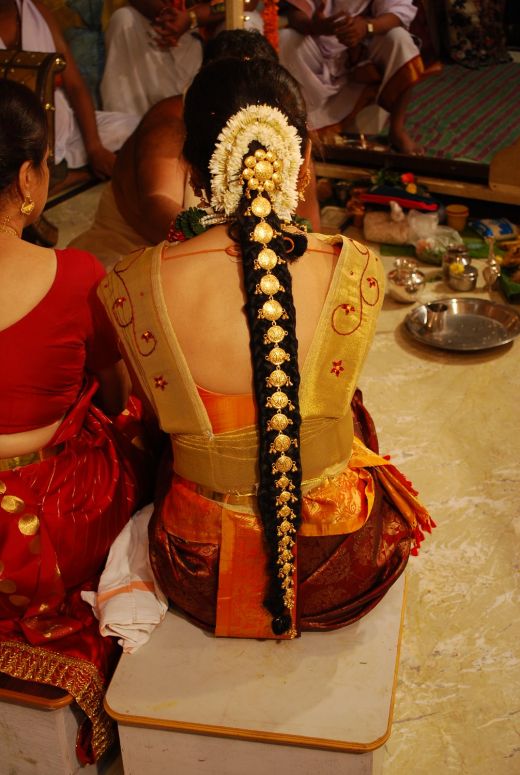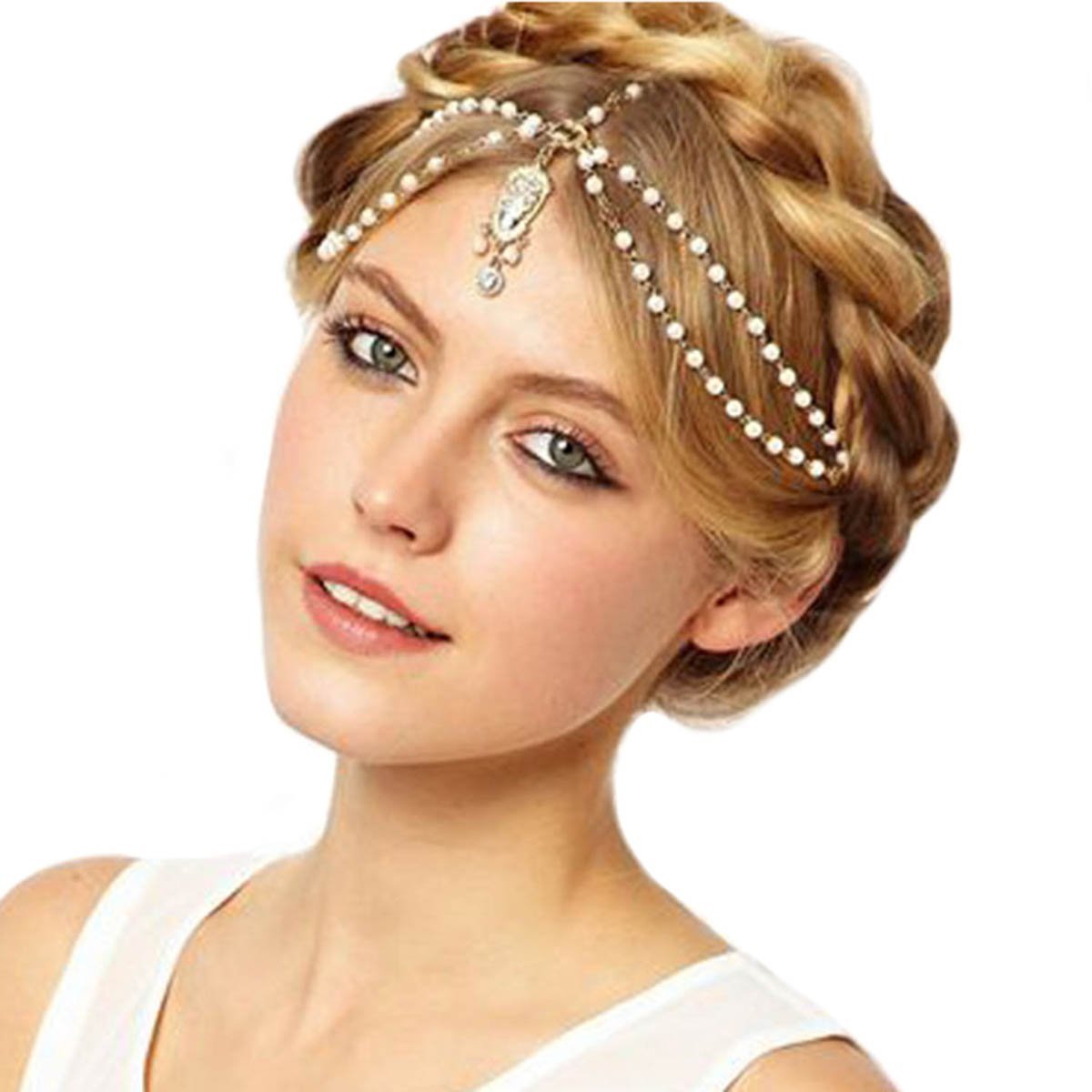In the realm of adornments, Indian hair jewelry stands as a captivating testament to the rich cultural heritage and artistic brilliance of India. These exquisite pieces, intricately crafted from precious metals, gemstones, and beads, transcend mere fashion, embodying a profound tapestry of symbolism, tradition, and personal expression.


A Tapestry of Treasures: Exploring the Diverse Forms of Indian Hair Jewelry
Indian hair jewelry encompasses a vast array of styles, each with its unique charm and cultural significance. From the resplendent mathapatti that adorns the forehead to the delicate jhumkas that grace the ears, these adornments add a touch of elegance and vibrancy to the wearer’s ensemble.
Mathapatti: A Crown of Adornment for the Forehead
The mathapatti, a crown-like ornament that graces the forehead, is a symbol of femininity, beauty, and spiritual connection. It is typically adorned with intricate designs, pearls, and gemstones, adding a touch of regality to the wearer’s appearance.
Jhumkas: Cascading Earrings that Embellish the Ears
Jhumkas, the quintessential Indian earrings, are known for their delicate chains, tinkling bells, and vibrant colors. They add a touch of playful charm and movement to the wearer’s face, often associated with joy and festivity.
Maang Tikka: A Dazzling Pendant that Graces the Forehead
The maang tikka, a delicate pendant gracing the space between the eyebrows, transcends mere adornment. It acts as a symbol of marital status and femininity, signifying a woman’s newfound union and embodying grace. Often adorned with a single gemstone or pearl, the maang tikka adds a touch of elegance and sophistication, elevating the wearer’s appearance.
Surma: Enhancing the Eyes with Kohl
Surma, a fine powder applied to the eyelids and waterline, is not just a cosmetic enhancement but also holds cultural and religious significance. It is believed to ward off evil spirits, protect the eyes from dust and infection, and enhance beauty.
Nose Rings: A Symbol of Beauty and Cultural Identity
Nose rings, known as nath or nose studs, are a distinctive feature of Indian hair jewelry, particularly in certain regions. They are often associated with beauty, cultural identity, and marital status.

Hair Adornments: Braids, Beads, and Flowers for a Touch of Elegance
Hair adornments, such as braids, beads, and flowers, play a significant role in Indian hair jewelry. Intricately braided hairstyles, adorned with beads or flowers, add a touch of elegance and sophistication to the wearer’s appearance.
Bindis: Colorful Dots that Add a Touch of Vibrancy
Bindis, the colorful dots applied between the eyebrows, are not just a cosmetic enhancement but also hold religious and cultural significance. They are believed to represent the third eye, a symbol of spiritual enlightenment, and are often associated with auspiciousness.
Unveiling the Symbolism: Decoding the Deeper Meanings of Indian Hair Jewelry
Indian hair jewelry goes beyond mere aesthetics; it is imbued with profound symbolism that reflects cultural beliefs, social status, and personal expression. Each piece carries a deeper meaning, adding a layer of richness to the adornment.
Spiritual Significance: Representing Religious Beliefs and Practices
Indian hair jewelry often holds religious significance, reflecting the wearer’s faith and devotion. For instance, the maang tikka may be adorned with religious symbols, while surma is believed to have spiritual cleansing properties.
Social Status: Indicating Marital Status, Wealth, and Social Standing
Certain Indian hair jewelry pieces serve as indicators of social status. For example, nose rings may be associated with marital status, while the type and quantity of gemstones used in adornments may reflect wealth and social standing.
Cultural Identity: Embodying Regional Traditions and Heritage
Indian hair jewelry plays a significant role in expressing cultural identity. Different regions have their unique styles and traditions, showcasing the diversity and richness of Indian culture.
Personal Expression: Reflecting Individual Style and Preferences
Indian hair jewelry also serves as a means of personal expression, allowing wearers to showcase their unique style and preferences. The choice of adornments, their arrangement, and the overall look reflect the wearer’s individuality.
Protection and Well-being: Warding off Evil and Ensuring Good Fortune
Indian hair jewelry is often believed to possess protective properties, warding off evil spirits and ensuring good fortune. Certain adornments may be associated with specific blessings or protection against specific ailments.
A Journey Through Time: Tracing the Evolution of Indian Hair Jewelry
Indian hair jewelry boasts a rich and fascinating history, evolving over centuries to reflect changing cultural trends and artistic influences. From its ancient origins to its modern adaptations, it has remained a significant element of Indian adornment.
Ancient Origins: Early Forms of Indian Hair Jewelry in Indus Valley Civilization
Evidence of early forms of Indian hair jewelry can be traced back to the Indus Valley Civilization (3300-1300 BCE). Archaeological excavations have unearthed beads, combs, and hairpins, indicating the use of hair adornments during this period.

Vedic Era: The Emergence of Elaborate Adornments and Symbolic Significance
The Vedic Era (1500-500 BCE) ushered in an era of elaborate hair adornments. This period also saw the rise of symbolic jewelry. Vedic texts document various hair ornaments, crafted from precious metals and adorned with gemstones. These adornments served not just as decoration, but also as markers of social status and religious beliefs.
Mughal Influence: Introduction of Precious Metals, Gemstones, and Intricate Designs
The Mughal Empire (1526-1857 CE) significantly influenced Indian hair jewelry. Mughal artisans introduced the use of precious metals like gold and silver, a wider variety of gemstones, and intricate enameling techniques. This era saw the creation of some of the most exquisite and opulent Indian hair jewelry pieces.
Regional Variations: Diverse Styles and Traditions Across India
Indian hair jewelry boasts a rich tapestry of regional variations. South India shines with its temple jewelry, showcasing intricate gold work and mythological motifs. In contrast, Rajasthan dazzles with its colorful meenakari jewelry, boasting vibrant enameling. These regional variations celebrate the diverse cultural heritage of India.
Modern Adaptations: Blending Traditional Craftsmanship with Contemporary Aesthetics
Indian hair jewelry is undergoing a transformation. Modern artisans are not only upholding traditional craftsmanship but also infusing it with contemporary aesthetics. They’re experimenting with new materials, creating lighter designs, and reinterpreting classic styles. Consequently, this art form remains relevant and continues to captivate wearers worldwide.
